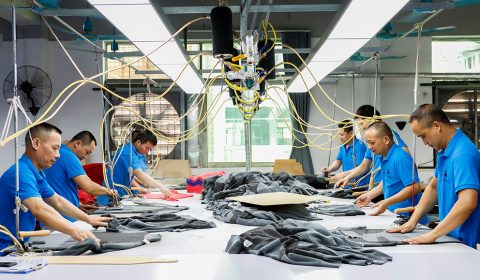Cotton is a crop with a long history, dating back thousands of years. The earliest cotton seeds were discovered in the Indian subcontinent, a discovery that revealed the importance of cotton in ancient civilizations. The fibers of cotton were used to make textiles that became part of trade in the ancient world. Cotton’s lightweight, soft and moisture-wicking qualities made it an ideal raw material for textiles, which won it favor all over the world.
Conventional cotton and organic cotton are two common types of cotton that have their own applications in customized clothing. Conventional cotton is usually a mass commercially produced product, and its production methods involve the use of chemical fertilizers and pesticides. Organic cotton, on the other hand, is grown in a more sustainable and environmentally friendly way without the use of harmful chemicals.
Conventional Cotton
Conventional cotton is cotton grown through traditional agricultural practices, which often include the use of chemical fertilizers and pesticides to increase yields and protect the cotton crop from pests. In growing conventional cotton, farmers often rely on chemical pesticides to control pests, herbicides to control weeds, and fertilizers to promote cotton growth. The use of these chemicals helps to increase yields, but also creates many environmental and health problems. Farmers may face health risks from chemicals, while soil and water sources may be contaminated by chemicals.
Organic Cotton
Organic cotton is grown and produced in a way that is committed to more environmentally friendly and sustainable agricultural practices. Organic cotton is often grown following a strict set of organic farming standards, without the use of chemical pesticides, fertilizers or genetically modified technology. Instead, farmers employ biological controls to control pests, use organic fertilizers to improve soil fertility, and adopt sensible crop rotations and mixes to protect the soil. This type of cultivation helps to keep the soil healthy and reduces the pollution of water resources, as well as the negative impact on the environment. Organic cotton production methods focus on sustainability and eco-friendliness, resulting in the production of purer cotton without chemical residues, more beneficial to the health of both farmers and consumers. In addition, the cultivation of organic cotton helps to promote the balance and diversity of agro-ecosystems and protects the integrity of natural ecosystems. By following strict organic standards, organic cotton producers and consumers work together to promote the development of sustainable agriculture and achieve the goal of sustainable development of agriculture.
Differences in production processes
The process of growing conventional cotton typically relies on the large-scale use of chemical fertilizers and pesticides. These chemicals are widely used to increase yields and control pests and diseases, but they also pose a range of environmental and health problems. The use of chemical fertilizers leads to a gradual loss of soil fertility, and agricultural practices that rely on chemicals may also lead to the contamination of soil and water sources. In addition, pesticide residues may have long-term effects on the environment and ecosystems, threatening the survival of wildlife.
In contrast, the production process of organic cotton eliminates the use of chemical fertilizers and pesticides. Organic cotton farming relies on natural fertilizers and biological control measures to maintain the ecological balance of cotton fields. This approach helps preserve the soil’s ecosystem and reduces the negative impact on the environment. Through eco-friendly agricultural practices, organic cotton growers are also committed to preserving biodiversity and sustainable development, providing long-term protection for the land and ecosystems.
Difference in environmental impact
The production of traditional cotton has a profound impact on soil quality. In traditional cotton cultivation, farmers often overuse chemical fertilizers and pesticides in order to increase yields, which leads to a gradual impoverishment of the soil. The infiltration of chemical fertilizers and pesticides causes damage to soil microorganisms and organic matter, disrupting the ecological balance of the soil. In addition, the problem of water pollution from traditional cotton cannot be ignored. Fertilizers and pesticides enter water bodies through soil infiltration or runoff, leading to water pollution. This negatively affects aquatic organisms and ecosystems, and also threatens the safety of human drinking water. In addition, the excessive use of water resources in conventional cotton cultivation can also exacerbate water scarcity.
In contrast, organic cotton cultivation is more ecologically friendly. Organic cotton production follows organic agricultural standards, without the use of synthetic fertilizers and pesticides. Through the use of natural fertilizers and biological control methods, organic cotton cultivation can maintain the health and productivity of the soil, help to improve the soil’s organic matter content and microbial activity, promote the ecological balance of the soil. In addition, organic cotton production can also effectively reduce water pollution. Because of the non-use of chemical pesticides, organic cotton production will not cause pollution of water sources, in favor of maintaining the living environment of aquatic organisms. At the same time, organic cotton production is also usually used water-saving irrigation techniques, reduce the excessive use of water resources. These production practices all help to protect the sustainable development of the ecological environment, to maintain the health and balance of the ecosystem.




 English
English Deutsch
Deutsch Français
Français Italiano
Italiano Español
Español Русский
Русский Polski
Polski Nederlands
Nederlands Svenska
Svenska

